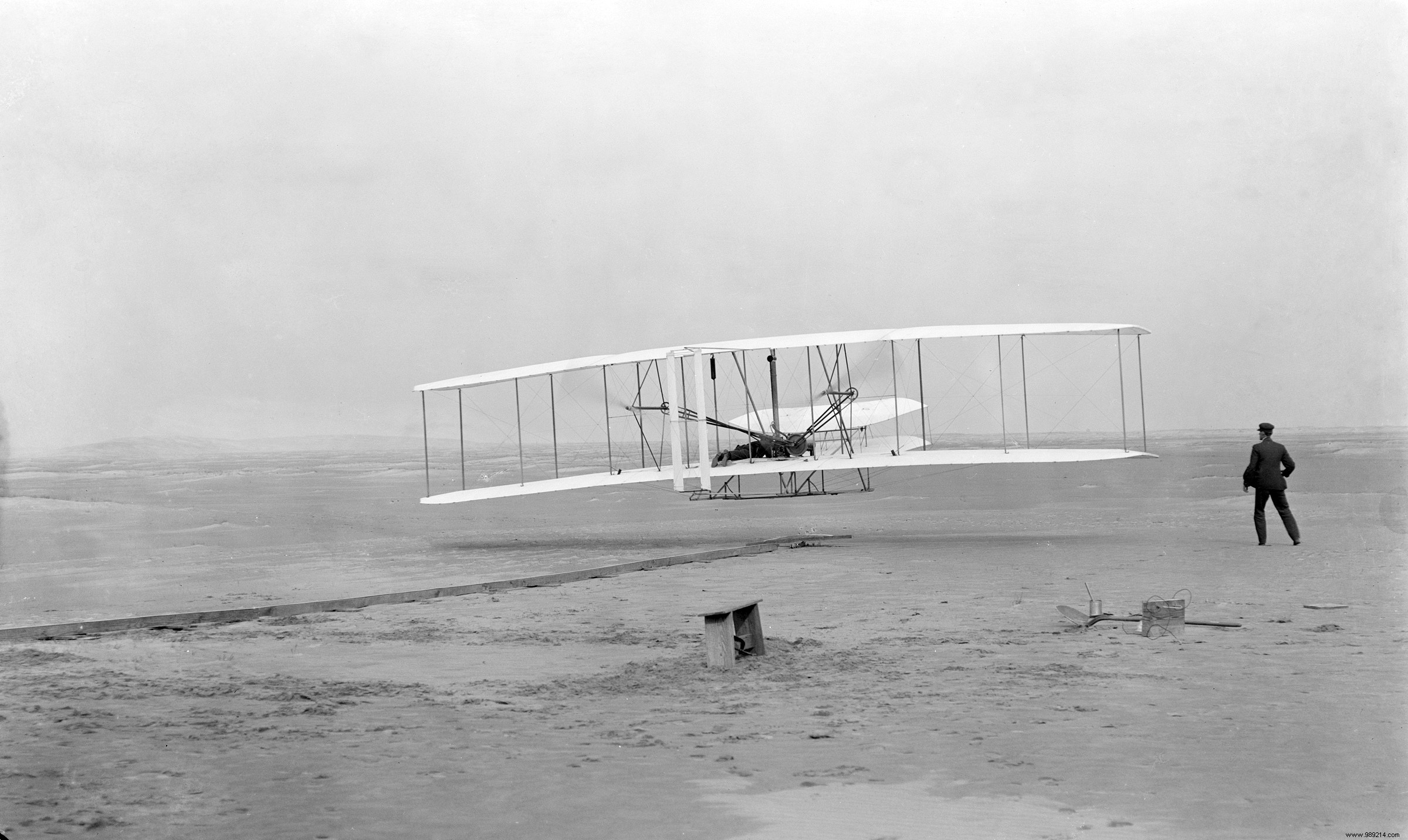The Ingenuity Experimental Martian Helicopter contains a small sample of fabric from the Wright Flyer, the aircraft in which the Wright brothers performed the first controlled, powered flights of the Earth. history of aviation, NASA revealed on Tuesday.
On Mars for a little over a month, the American rover Perseverance has just released the anti-debris shield responsible for protecting Ingenuity during landing. The rotorcraft will attempt its first powered flight on April 8 at the earliest, just over 117 years after the Wright brothers' first attempts at Kitty Hawk in North Carolina on December 17, 1903. The two brothers had taken turns, performing four flights that day.
The reference is in order here. Indeed, Carillon Historical Park in Dayton, Ohio, the Wrights' hometown, recently donated to NASA a piece of tissue taken from the lower left wing of the Wright Flyer, the aircraft that two brothers to realize their exploits. The great-grand-niece and great-grand-nephew of the latter naturally gave their consent.
“Wilbur and Orville Wright would be happy to know that a small piece of their 1903 Wright Flyer I, the machine that truly started the space age, will make history again by joining the planet Mars!" , they said in a statement.
For information, the material is glued to a cable under the solar panel of the helicopter.
Recall that a fragment of wood and fabric from the Wright Flyer already flew to the Moon in 1969 as part of the Apollo 11 mission. A sample had also accompanied John Glenn in orbit aboard the space shuttle Discovery in 1998. Just like the Wright brothers, Neil Armstrong and John Glenn came from Ohio.

Regarding this first Martian flight, the Jet Propulsion Laboratory recently declared that it had found the ideal "aerodrome" for this first test flight. This is an area approximately 10 by 10 meters located right next to the rover landing site in Jezero Crater.
The JPL will give itself a few days to carry out a first test. The rotorcraft will then activate its blades at nearly 2,900 revolutions per minute, before rising to about three meters in height for thirty seconds. For its part, Perseverance will keep a good distance to try to document (sounds and images) the event.
If successful, it will be the first attempted and successful flight on another planet.